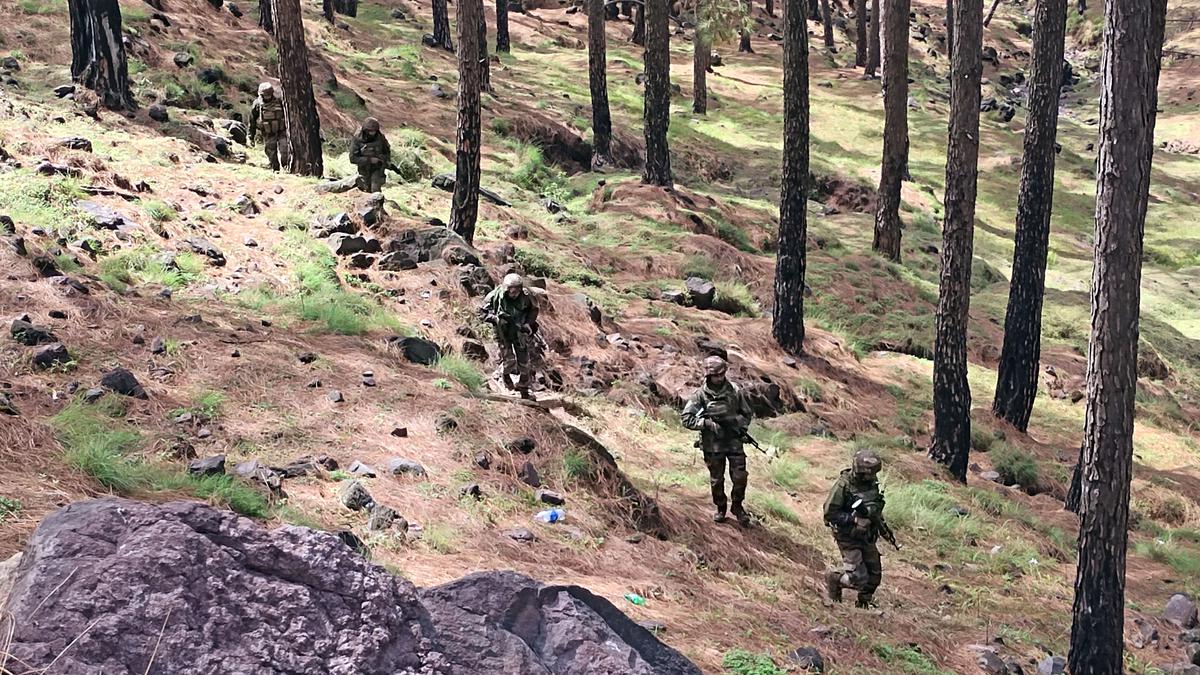
Pay heed to a resurgence in militancy in Rajouri-Poonch Premium
The Hindu
Peace in the Rajouri-Poonch region rests on the efforts and sacrifices of Indian soldiers and the Gurjar-Bakkarwals
The Rajouri-Poonch region of Jammu and Kashmir has been in the news recently for all the wrong reasons. The border districts here have seen a relative surge in terror-related incidents over the last couple of years. Since October 2021, militants have killed at least 20 soldiers in the area between the Bhatta Durian-Chamrer forests in Poonch and Pargal-Dangri in Rajouri; in the latest incident, five special forces soldiers were lost in a blast on May 5 during a combing operation.
This region has been relatively calmer since the mid-2000s, after being a hotbed of insurgency in the late 1990s and the early 2000s. Traditional infiltration routes were through the hilly and forested terrain of Rajouri-Poonch, mainly being on the Line of Control (LoC). Terrorists infiltrating through the Poonch, Mendar and Rajouri sub-sectors of the LoC used to pass through these areas while heading for the Pir Panjal ranges to enter the Valley. An extensive network of over ground workers and an associated support base flourished in the region. Also, the forested area of Surankote (in Poonch district) on the higher ridges was used as transit camps and training grounds for terrorists.
This was the context to Operation Sarp Vinash (of 2022) also known as the Hill Kaka Operations launched by the Counter Insurgency Force ‘Romeo’. The operation resulted in the elimination of an estimated 65-70 terrorists. While being deployed in the region since the early 1999s, hundreds of security personnel have made great sacrifices for peace. The forces have also been strongly supported by the local population. The demography of the region is one of Muslim domination with the Gurjar-Bakkarwal community in the majority.
The support of the Gurjar-Bakkarwals to the Indian Army saw the first Muslim village defence committee being set up in this region in December 2002, in response to atrocities on locals by Harkat-ul-Mujahideen cadres. The support of the Gurjar-Bakkarwals to the Indian state in counter-insurgency operations gained traction when in 2002, Tahir Hussain returned to Surankote from employment in Saudi Arabia to avenge the death of his brother killed by the Lashkar-e-Taiba. Several others from Surankote tehsil, accompanied Tahir Hussein to fight the insurgents who had consolidated themselves in the forested areas of Surankote. Since 2004-05, peace has prevailed largely because the people decided to stand up to the terrorists; the Gurjar-Bakkarwals have had a major role to play in this.
Having seen the sensitivity of Rajouri-Poonch, the recent revival of militancy, though not on the scale it was earlier, is a matter of concern. It is quite certain that terrorist cadres and their leadership in Pakistan will be looking to diversify in wanting to become a force to reckon with, much beyond the Kashmir Valley. The constant variable in recent terror strikes in this region has been that militants continue to be at large, except for one ‘kill’ during an operation launched by security forces on June 1.
There are many attributes to the short-term gains that terror cadres have been able to achieve. According to government sources, analysts and the media, a few of the factors in favour of the terrorists are: use of smart technology by terrorists to communicate and move around, operations in small groups and from urban pockets, a thinned down counter-insurgency grid in Jammu region due to troops being pulled out for deployment on the Line of Actual Control (LAC), reinvigoration of sleeper cells and over ground workers, a deepening drug menace and its nexus with terrorism.
Also, certain sections maintain that infiltration is not taking place in a conventional manner across the LoC any more, but is happening through the Nepal and Bangladesh borders. In a nutshell, the causes behind a revival of militancy in this region are multifarious and by re-establishing support of Gujjar-Bakkarwals, all the challenges could be overcome. In the short and mid term, outsmarting terrorists in the use of technology or defeating them in use of rhetoric on social media has always proved to be a tall order for state agencies.













